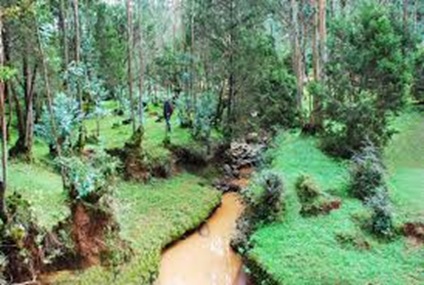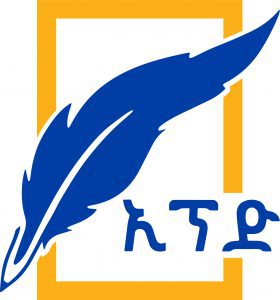
World Wildlife Day is observed annually on March 3rd to promote awareness about the value of wildlife and the necessity for conservation activities. The United Nations General Assembly established the day in 2013 in response to a recommendation from the 2013 Convention on International Trade in Endangered Species of Wild Fauna and Flora (CITES) Conference of the Parties.
Celebrating the day is important for raising awareness about issues that affect the world. Because the Day provides a global forum for raising awareness about the value of wildlife and biodiversity. It emphasizes the essential role that wildlife plays in sustaining healthy ecosystems and human livelihoods.
Furthermore, the day can be used for numerous conservation advocacy activities because it underscores the importance of collaborative efforts to protect endangered animals and their ecosystems. It encourages governments, organizations, and individuals to take part in conservation efforts. It also raises awareness about the different risks to wildlife, such as habitat loss, poaching, illegal wildlife trading, illegal wildlife trading, climate change, and pollution. By emphasizing these issues, it encourages debates about protective remedies and methods.
It also encourages sustainable wildlife conservation and protection practices. By encouraging responsible tourism, sustainable land use, and conservation-friendly policies, it promotes sustainable practices that benefit both human communities and wildlife. Besides, it offers a chance to celebrate the planet’s rich biodiversity and the beauty of wildlife, inspiring awe and a connection to the natural world.
More significantly, since animal conservation is a global issue that necessitates international cooperation, the celebration of the day should promote global cooperation among all stakeholders. World Wildlife Day encourages nations, non-governmental organizations, and communities to work together to address the problems facing wildlife conservation.
Thus, World Wildlife Day is essential to raising awareness and encouraging action for wildlife conservation around the world. It seeks to promote a greater awareness of the significance of preserving our planet’s biodiversity for future generations by involving people, communities, and governments.
Given the significance of World Wildlife Day, Ethiopia observes it annually to safeguard its fauna by utilizing its diverse ecosystems and abundant biodiversity. “Wildlife Conservation Finance: Investing in People and Planet” is the topic for this year’s celebration, which emphasizes the vital link between ecosystem health and community well-being.
Indeed, Ethiopia is home to many endemic species and different habitats which makes it a vital country for wildlife conservation. As a result, the Ethiopian Wildlife Conservation Authority (EWCA) commemorated World Wildlife Day and its 60th anniversary with events such as a tour of the Gullele Botanic Garden, which included a variety of indigenous species.
The day featured a tour of the Gullele Botanic Garden, home to a wide variety of flora and fauna, including several endemic species from both plant and animal kingdoms. Following the tour, a discussion was held on the importance of conservation.
During the celebration, the EWCA Director General Kumara Wakijira emphasized the significance of the day in raising awareness about wildlife conservation. Besides, Ethiopia has pledged to take a leading role in global wildlife conservation, urging international collaboration for the mutual benefit of wildlife and communities.
He acknowledged that while Ethiopia has made notable progress in preserving its wildlife resources, additional investment is necessary to tackle the increasing pressures on ecosystems and biodiversity. He added that “The future of Ethiopia’s wildlife, and the health of our planet, depends on our collective ability to finance sustainable conservation efforts that can withstand the challenges of the coming decades.
He also pointed out that securing adequate financing remains one of the main challenges in wildlife conservation. To address this, he noted that EWCA is working closely with both local and international partners to ensure sustainable financial support for these efforts.
Ethiopian Ministry of Tourism State Minister Endegena Abebe, in his remarks, stated that wildlife conservation is inseparable from economic development and cultural diversity. “It is our duty to safeguard these treasures, not just for their intrinsic value but for the countless opportunities they offer for sustainable development,” he said.
Endegena called for collective action from both local and international partners to support the conservation of Ethiopia’s ecosystems and wildlife.
It is true that Ethiopia has a broad diversity of wildlife and ecosystems, which makes the conservation efforts of the country very critical for maintaining its natural heritage. The country has made many measures to conserve and safeguard wildlife, such as establishing protected areas and national parks. Ethiopia has developed numerous national parks and protected areas to protect its diverse flora and fauna. Notable parks include Simien Mountains National Park, Bale Mountains National Park, and Awash National Park, among others. From these parks, the two parks are UNESCO World Heritage Sites due to their diverse wildlife, which includes the critically endangered Ethiopian wolf.
Accordingly, the celebration of the day aimed to investigate how Ethiopia, in conjunction with the global community, might boost funding for wildlife conservation, as well as creative solutions that balance wildlife conservation with sustainable development.
According to EWCA, the role of technologies in the tourism industry is becoming increasingly significant in terms of conserving natural resources, conducting sector-specific studies and research, and generally promoting the sector. This strategy, being used by the Ethiopian Wildlife Conservation Authority in the field of animal conservation, is a unique tool for overcoming the sector’s issues.
In addition, the Authority is working on several projects right now, beginning with updating its information management system to accurately gather and arrange data on the activities conducted in wildlife conservation areas. This will help to establish a setting where national parks are more well-known for conservation work and sector professionals can easily become acquainted with new techniques that are frequently developed.
The purpose of World Wildlife Day is to encourage a unified effort by local communities, corporations, financial institutions, government agencies, and people to enhance investment in wildlife protection. The celebration of the day is imperative to prepare educational programs, wildlife protection campaigns, and collaborations with national and international conservation groups.
In general, while Ethiopia has made considerable efforts in wildlife conservation, additional financial support is needed for long-term animal conservation operations, as well as to address the challenges provided by its unique biodiversity. Therefore, it is critical to coordinate effective financial assistance and conservation measures among the government, non-governmental groups, local communities, and international partners.
BY EPHREM ANDARGACHEW
THE ETHIOPIAN HERALD TUESDAY 11 MARCH




